

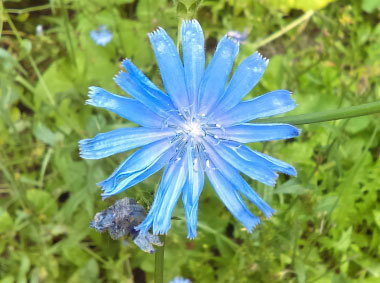
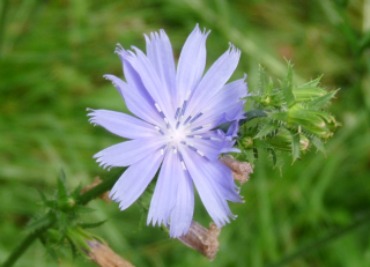
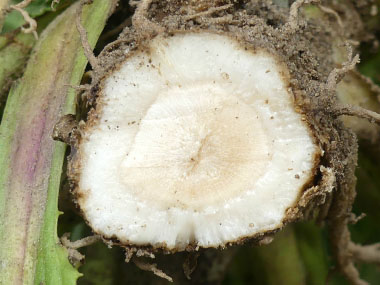
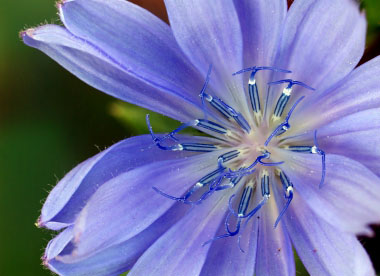


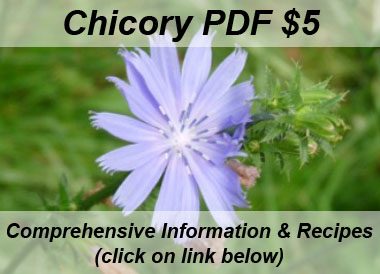
For comprehensive information (e.g. nutrition, health benefits, recipes, history, harvesting tips, etc.) please check out our Chicory PDF magazine.
Chicory is a perennial herbaceous plant with a blue or lavender flower. Its leaves are tastiest in the spring and autumn as the summer heat tends to make them taste a little bitter – but they are still edible. Toss them in a salad but before doing so, blanch them. They can be mixed with other greens to minimize their strong flavor. The mature green leaves can be used as a cooked vegetable.
Distinguishing Features
Chicory is a branching, scraggly-looking plant. It often stands out alone in gravel areas, or open weedy fields and the flowers only open on a sunny day.
Flowers
The flowers are 2 to 4 cm. wide and are usually a bright, light blue. There are two rows of involucral bracts - the inner are longer and erect, the outer are shorter and spreading. Chicory flowers from July until October.
 Fields
of Nutrition has medicinal benefits and vitamin/mineral content of Chicory.
Fields
of Nutrition has medicinal benefits and vitamin/mineral content of Chicory.
Leaves
At the base leaves resemble dandelion leaves then alternately spaced and much smaller as they get higher up on the stem.
Height
When full grown, chicory can reach heights that vary between 90 and 180 cm.
Habitat
Open areas, roadsides, grassy areas near parking lots, and 'weedy' fields all over Ontario and most of Canada and the U.S.
Edible Parts
Leaves and root. Although the flower is edible, it is very bitter.
Recipes
To support our efforts please browse our store (books with health benefits, etc.).
Winter Survival Food Handbook

PDF Plant Magazines
Types of Wild Food
Geographic Zones Seasons
Disclaimer
EdibleWildFood.com is informational in nature. While we strive to be 100% accurate, it is solely up to the reader to ensure proper plant identification. Some wild plants are poisonous or can have serious adverse health effects.
We are not health professionals, medical doctors, nor are we nutritionists. It is up to the reader to verify nutritional information and health benefits with qualified professionals for all edible plants listed in this web site. Please click here for more information.
Why Edible Wild Food?
- Food costs are rising
- Free, wild food is readily abundant
- Wild food adds nutrition to your diet
- Wild food can help treat various medical conditions





